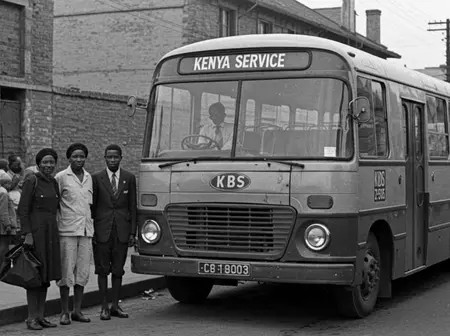For decades, Kenya Bus Service (KBS) was a familiar name on Kenyan roads, transporting millions of passengers across the country. More than just a bus company, it was a symbol of order, reliability, and government involvement in public transport. Today, however, its presence has almost vanished, leaving many to ask: What really happened to KBS?
This comprehensive guide covers the history, rise, decline, and legacy of Kenya Bus Service (KBS)—a story that continues to fascinate both transport historians and everyday Kenyans.
Kenya Bus Service was one of the oldest and most recognizable public bus companies in Kenya. Originally structured as a government-supported operator, it was tasked with providing safe, affordable, and accessible transport across towns and rural areas.
Unlike private operators focused on profit, KBS was mandated to ensure nationwide connectivity, even on routes that were less lucrative. Over time, it became an important part of Kenya’s transport ecosystem, connecting families, businesses, and communities.
KBS grew rapidly from its inception, expanding into a fleet that covered major highways like:
During its golden era, KBS buses were known for:
Its buses became a household name, with school trips, market journeys, and family travels often linked to the iconic KBS brand.
Like many state-backed enterprises, KBS faced several challenges that eroded its strength.
a) Financial DifficultiesOperating a large bus company is costly. Rising expenses in fuel, spare parts, insurance, and salaries began to outweigh fare revenues, especially on less profitable routes.
b) Growing CompetitionThe liberalization of the transport sector allowed aggressive private operators to enter the market. Companies introduced luxury coaches, express services, and competitive fares, drawing passengers away from KBS.
c) Political and Management IssuesFrequent political interference, corruption, and mismanagement weakened decision-making. Fleet renewal slowed down, while bureaucracy delayed vital changes.
d) Aging FleetWithout reinvestment, KBS buses became outdated, prone to breakdowns, and less comfortable than modern competitors.
e) Unprofitable RoutesKBS often had to maintain loss-making routes to fulfill its public mandate. While noble, these losses gradually dragged down the company’s overall finances.
By the late 1990s and early 2000s, the effects of these challenges became visible. KBS started losing routes, reducing its fleet, and struggling to maintain service quality.
Passengers who once trusted KBS began switching to private companies offering faster, cleaner, and more reliable buses. Over time, the once-dominant blue and white KBS buses became a rare sight on Kenyan highways.
The downfall of Kenya Bus Service left both positive and negative outcomes.
Though largely absent today, the story of KBS remains relevant for several reasons:
Q: Is Kenya Bus Service still operating today?A: In its original form, no. Only remnants of the brand exist, with most routes now run by private bus companies.
Q: Why did KBS decline?A: A mix of financial losses, poor management, political interference, aging buses, and competition from private operators.
Q: What routes did KBS serve?A: Nairobi–Mombasa, Nairobi–Kisumu, Nairobi–Eldoret, plus many rural connections.
Q: Could KBS return in the future?A: Revival is possible but would require heavy restructuring, public–private partnerships, and modern fleet investments.
The story of Kenya Bus Service (KBS) is more than a tale of a company—it reflects the broader challenges of balancing social service with financial sustainability. Its rise and fall remain a lesson in transport planning, governance, and market competition.
For many Kenyans, KBS is remembered with nostalgia; for policymakers, it is a case study; and for future transport planners, it is a reminder that even the strongest enterprises can collapse without reinvention.
As Kenya continues to modernize its transport sector, the lessons of KBS remain invaluable: efficient management, fleet renewal, and a balance between profit and public service are the keys to keeping buses moving for generations to come.

Leave a Reply